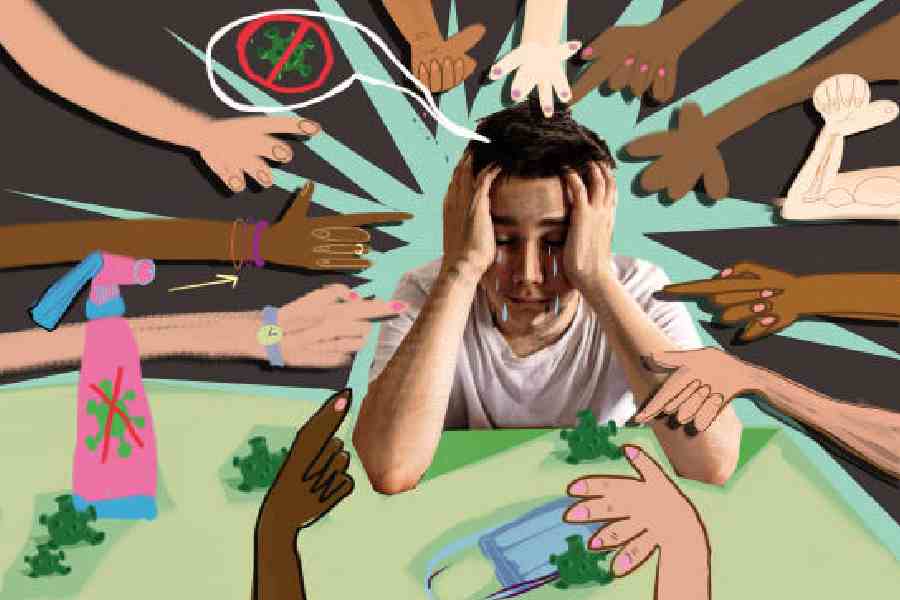One of the many things which many of us (read dinosaurs) are having to adapt to in our professional lives is the increasing trend in ‘Internet-inspired self-diagnosis’. A recent article on this phenomenon in an academic journal for child psychiatrists spurred me to review my own responses.
Usually, young people do not come to see a psychiatrist on their own initiative. The stigma of being labelled prevents most of them from accessing help. They usually come when cajoled or forced by their parents. Recently a 14-year-old boy was disappointed when he realised that his parents were not really taking him out to Pizza Hut but bringing him to see me! He was brought under a false pretext.
However, there is a new trend. It is inspired by social media, whereby young people come to us with a view to rubber-stamp their self-diagnosis. They may have gained knowledge about the condition from Google/Instagram/ FB. Some of these suspected psychiatric disorders seem to come in waves, corresponding to widely viewed posts that reverberate through social media communities.
My current intern who is also my Instagram coach (and is not doing a good job!) asked me how many dissociative identity disorder patients I have seen in my lifetime. It is the latest ‘trending’ psychiatric diagnosis on social media these days. I have met many parents who speculate that social media has been contributing to increases in the prevalence of non-pathological identities such as describing one’s gender identity as nonbinary or transgender or viewing one’s personality as an introvert.
The ADHD dilemma
I recently met Priya, who was a prototype of the current trend. She was seeking a diagnosis of Attention Deficit Hyperactivity Disorder (ADHD). She was 22 years old, was studying in a US university and was absolutely certain that she had ADHD. She wanted to get an assessment done in the US itself, but the costs there were prohibitive. She had been to another psychiatrist in the city, who did not feel she had ADHD. It appeared she was quite desperate to get the diagnosis when she met me for the first time.
The reluctance of psychiatrists to quickly diagnose ADHD has genuine validity. The process of diagnosing ADHD requires due diligence. Multiple sources of information are required, with a detailed evaluation of past (childhood) development and current functioning. It is a diagnosis for a lifetime. Many academic institutions all over the world give extra benefits to students who have been diagnosed with ADHD. For example, a student with ADHD can have extra time for submission of projects or for examinations.
The other more socio-political reason to view self-diagnosis critically is that ADHD is a contentious diagnosis. A powerful and vocal anti-psychiatry lobby believes that “labelling” children and young people with a medical diagnosis of ADHD is a travesty. They claim ADHD is a spurious diagnosis. Many academics/researchers believe that the core symptoms of ADHD (restlessness, inattention and impulsivity) can be explained as variations of a “normal” childhood, influenced by the child’s environment.
The opinion of the critics is that, if the child appears to be more restless or inattentive, there could be reasons triggering such behaviour in the child’s environment. Pathologising a child’s response to adversities as a medical disorder is wrong. According to them, ADHD is not a “real” disorder but a conspiracy hatched by doctors and large pharmaceutical companies to medicate young people and make money.
The answer is complicated
So what is ADHD and why is there so much fuss about it? Like almost all psychiatric disorders, ADHD is characterised by certain behavioural manifestations and there are no blood tests or scans which can confirm ADHD. The diagnosis is made purely on the basis of a detailed clinical interview of multiple sources, aided by psychological tests. These psychological tests are also known as psychometric evaluations.
It is the process of arriving at a diagnosis which causes the problem. I cannot do some blood tests and confirm that you have a disorder known as ADHD. Neither do scans help, which is counterintuitive. We (psychiatrists) describe ADHD as a brain disorder, so how come the brain scans do not show any well-defined abnormalities which can confirm the diagnosis of ADHD?
The answer is complicated. There are many documented and proven deficits both in brain functioning and brain structure in ADHD but those deficits are subtle and can only be picked up by cutting-edge imaging methods used in premier research centres. The routine scans/tests we use to measure and check brain health are not powerful enough to pick up these deficits. So, the answer is, yes there are brain deficits in ADHD but routine blood tests and scans are not sophisticated enough to detect them.
The fact that psychiatrists cannot easily demonstrate brain deficits in ADHD, gives ammunition to the anti-psychiatry lobby who claim that ADHD is a ‘spurious’ diagnosis. The same is true for many other diagnoses in psychiatry.
It is in this backdrop we will need to examine the phenomena of ‘Internet-inspired self-diagnosis’ of conditions like ADHD. A key initiative in the academic and clinical practice of psychiatry, in the past decade, has been to eliminate the subjective bias of diagnosing a mental illness. A significant amount of research has gone into standardising the process of mental health evaluation. Arriving at a proper diagnosis of patients coming to us requires years of specialist training. Therefore, self-diagnosis based on knowledge gained from unverified sources dilutes and completely undermines this scientific progress and can be dangerous.
Learn to keep an open mind
On the flip side, completely disregarding personal narratives of suffering just because it does not fit into our “scientific” mind frame is naive and churlish. There is a lot of stigma which prevents people from acknowledging that they could be having a mental illness. Therefore, when someone comes to me with the same, I have the dilemma between lauding the personal courage against the scepticism of how much of what the person is presenting is part of a “real” disorder. Only a part of human psychological distress can be explained by a psychiatric illness. Not everyone who comes to see us, and is in distress, has a mental illness. The problem lies with the fact that there are plenty of unverified checklists available on the Internet, which can supposedly diagnose a host of mental illnesses. So anyone can tick some boxes in the questionnaire and get a “diagnosis”. This is what is known as “Internet-inspired self-diagnosis”. These checklists do not take into account the individual life situations of the person who is answering the checklist.

In reality, all aspects of mental functioning come from a complicated mash-up of mutually interacting genetic and environmental factors. This includes personality traits, sexual orientation, and mental illnesses such as depression and conditions such as ADHD amongst other things.
David Rettew, an academic and a researcher, while critiquing these phenomena of self-diagnosis, notes that the environmental contributors include things such as peers and media influences. The point he is trying to make is that if I believe that the young person is presenting to me with symptoms which are influenced by what he has read on social media or heard from his peers, it should not immediately disqualify someone’s history of suffering as undeserving.
Learning to keep an open mind is vital. One principle that has served me well over the years is the idea that the more complicated a clinical situation appears to be, the more important it is to stick to the basics. The basics of good psychiatric evaluation under these specific circumstances are:
l Establish a good rapport with the patient
l Ask difficult questions respectfully (particularly those elephants in the room, awkward ones)
l Do not roll your eyes in disbelief even if you are sceptical
l Validate/empathise while maintaining a bit of scepticism
l Give yourself some time to conceptualise
In following the above process, I have found that many of those ‘trending’ presentations on social media are actually accurate descriptions of long-suppressed problems of the person sitting in front of me. Whatever they have read on social media has encouraged them to access help and maybe they are now living in a more supportive environment, which has encouraged help-seeking.
The real challenge
It also happens that the diagnosis that inspired the youth to present to me is not quite the right one, but there are multiple other problems in personal and social life, which is causing distress. I then have to undertake the task of explaining to them that a “diagnosis” will not fix his/her predicament and that there is still much work to be done in other areas of their lives. Rarely have I met people who have been heavily influenced by what they have heard from a peer or seen on social media, and feel a need to connect with it, without any genuine basis. Convincing them that they do not have a “diagnosis” is trickier.
The real challenge when people come to us with self-diagnosis is that we may feel we have to take sides: real or fake, right or wrong? Conversations around the complexity of diagnosis can be misunderstood by those who are coming to us. I have been blamed for being incompetent and indecisive by the person when I have gone against the self-diagnosis.
Our current social order will force us to grapple with this reality of self-diagnosis and people coming to us to validate it. Our duty, as I mentioned earlier, is to stick to the basics of good psychiatric evaluation. We also need to open up the conversation with young people that when it comes to the brain and its functions, things really are complex. Representations of an illness on social media are often a deeply personal narrative. Extrapolating that personal narrative to our lives is invariably an oversimplification. There is a science to the method of diagnosis in psychiatry. Diagnosing oneself simply on the basis of information on social media is grossly inadequate to reflect the complexity of the process.
With respect to Priya, my colleagues and I completed the evaluation. I explained to her that she did not have ADHD but had severe anxiety disorder and panic disorder, which needed therapy and medicines. She did not come back to see me again.
Dr Jai Ranjan Ram is a senior consultant psychiatrist and co-founder of Mental Health Foundation (www.mhfkolkata.com). Find him on Facebook@Jai R Ram











